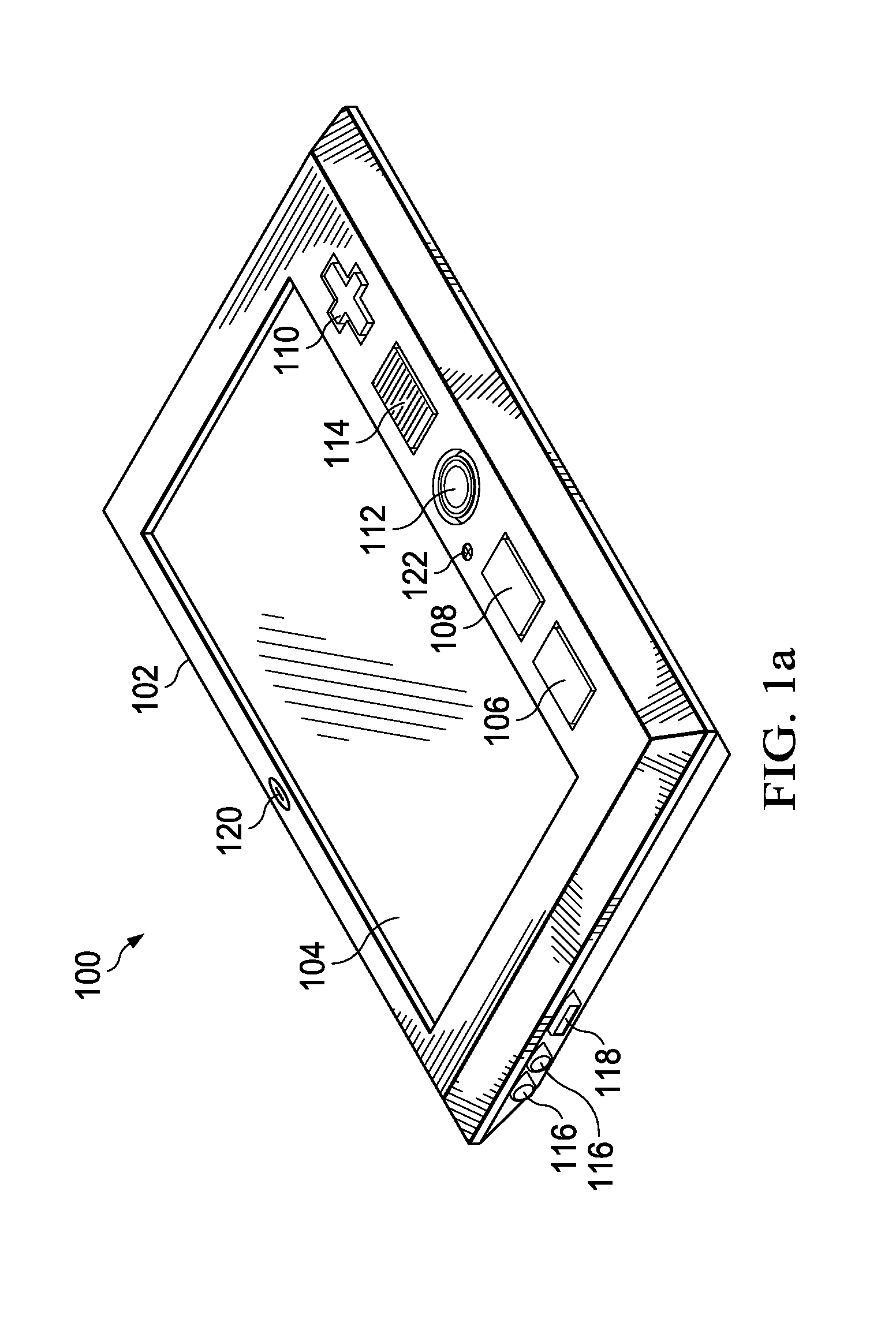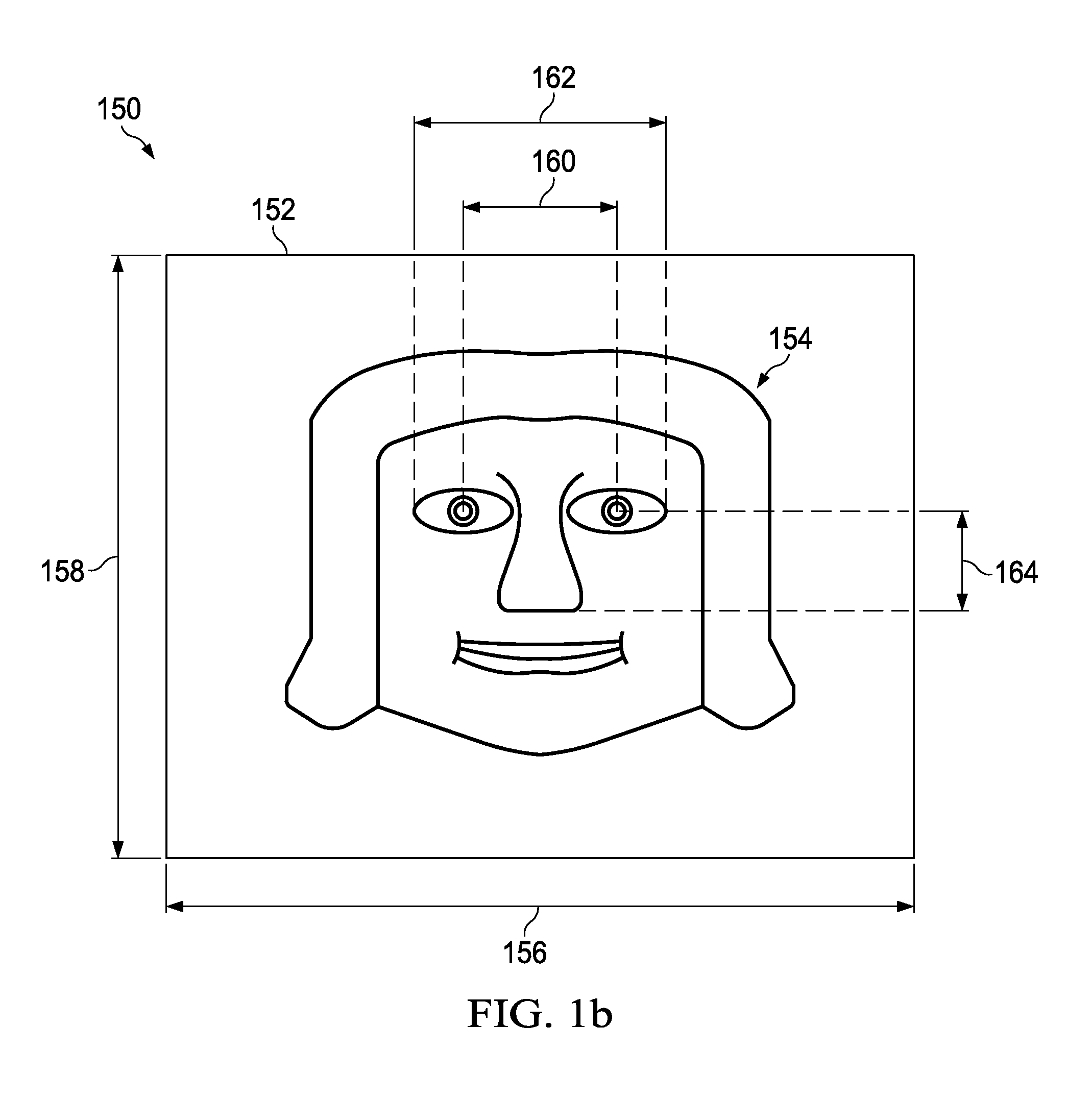Shape discrimination vision assessment and tracking system
a technology of shape discrimination and vision assessment, applied in the field of design and implementation of vision testing and assessment systems, can solve the problems of limited monitoring value, rapid degeneration of diseases, and potential active and active diseases, and achieve the effects of reducing the risk of blindness, permanent vision loss or even blindness
- Summary
- Abstract
- Description
- Claims
- Application Information
AI Technical Summary
Benefits of technology
Problems solved by technology
Method used
Image
Examples
Embodiment Construction
[0028]In FIG. 1a, an electronic handheld device 100 is shown. The handheld device 100 may include a case 102, a display 104, a cursor control 110, a fingerprint sensor 114, a camera 112, a first button 106, a second button 108, a speaker 120, a microphone 122, a power connector 116, and an interface port 118. The display 104 may include touch-screen and / or multi-touch capability so that the handheld device 100 may be controlled by touching the display 104 in various locations or manners within certain timeframes. The fingerprint sensor 114 allows the handheld device 100 to identify the person using it (referred to as a user). Other techniques for positive identification such as voice analysis, passwords, biometric analysis, photographic analysis, and other possible techniques may also be implemented in the handheld device 100. It is also possible to positively identify the specific handheld device 100 that was used to take a specific test by recording an identifying number or code s...
PUM
 Login to View More
Login to View More Abstract
Description
Claims
Application Information
 Login to View More
Login to View More - R&D
- Intellectual Property
- Life Sciences
- Materials
- Tech Scout
- Unparalleled Data Quality
- Higher Quality Content
- 60% Fewer Hallucinations
Browse by: Latest US Patents, China's latest patents, Technical Efficacy Thesaurus, Application Domain, Technology Topic, Popular Technical Reports.
© 2025 PatSnap. All rights reserved.Legal|Privacy policy|Modern Slavery Act Transparency Statement|Sitemap|About US| Contact US: help@patsnap.com



